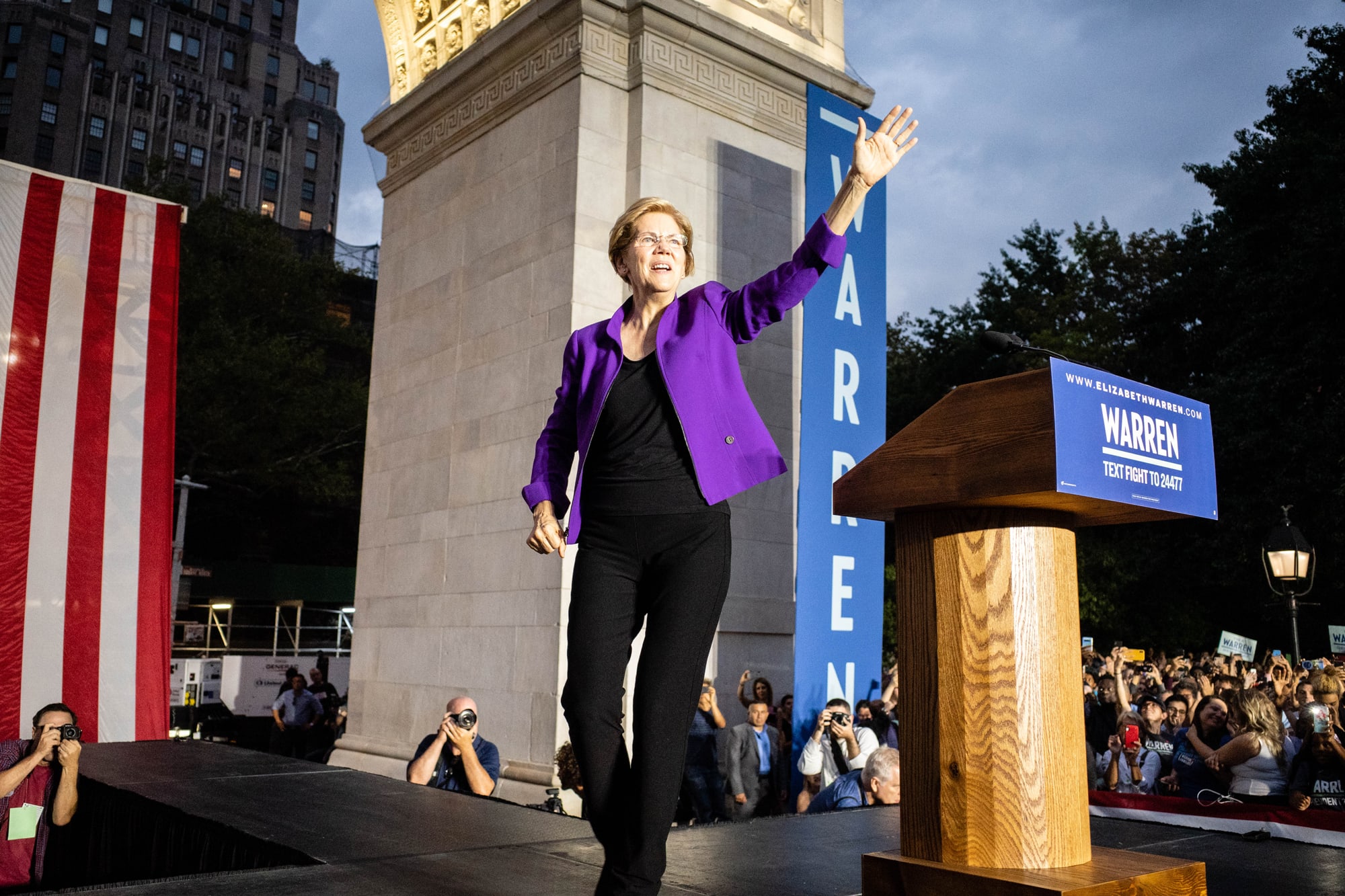
Elizabeth Warren’s rally on September 16, 2019, Washington Square Park, New York.
Joel Sheakoski | Barcroft Media | Getty Images
The partisan polarization of America’s economy is rapidly catching up to the polarization of its voting patterns.
Republicans and Democrats have long since separated themselves by ideology, leaving each more uniformly conservative or liberal than ever. And now a new data analysis by the Brookings Institution documents just how fast their economic fortunes have diverged as well.
That widening red-blue economic divide in turn drives the parties’ starkly different policy agendas. It helps explain why Democrats lavish more attention on education, technology and protecting immigrants, for example, while President Donald Trump and other Republicans place mining, manufacturing and border control on center stage.
“A series of genuine, penetrating shifts have been happening at warp speed through the last decade,” write Mark Muro and Jacob Whiton, both scholars at the Brookings Institution in Washington. “These shifts are massively altering the two parties’ economic identities.”
Drawn from Census and elections data, the Brookings analysis shows the extent of the change over the decade that began in 2008. Among the biggest shifts is the new geography of Congress, as Democrats offset losses in less densely-populated rural districts with gains in more densely-populated urban and suburban area.
The House Democratic majority, which represented 39% of the U.S. land area in 2008, now represents just 20%. The House Republican minority 80% of U.S. territory.
That widening red-blue economic divide in turn drives the parties’ starkly different policy agendas. It helps explain why Democrats lavish more attention on education, technology and protecting immigrants, for example, while President Donald Trump and other Republicans place mining, manufacturing and border control on center stage.
That coincides with a sharp increase in incomes and economic output for the constituencies Democrats represent in Congress. Today, the $61,000 median income of blue districts substantially exceeds the $53,000 median income of red ones, reversing the order from 2008.
The average gross domestic product for Democratic districts, near parity with Republican ones in 2008, has grown 50% higher. Output per worker has followed the same pattern.
Those shifts reflect trends within a globally-integrated economy that increasingly rewards better-educated workers and advanced technology. The share of professional and digital services jobs in Democratic districts more than doubles the share in Republican districts; a significantly higher proportion in blue areas now holds college degrees.
By contrast, Republican districts now boast the lion’s share of work in basic manufacturing, agriculture and mining. They also have a slightly higher proportion of residents age 65 or older – 16.6%, compared to 14.7% in Democratic districts.
While red districts have remained demographically static, blue ones have grown more diverse. Roughly half of residents in Democratic districts are non-white, up by ten percentage points since 2008, compared to just over one-fourth in Republican areas.
Immigration patterns have produced a similar shift. The foreign-born population in Republican districts has fallen from 10.5% to 8.1%, while it has risen in Democratic districts from 15.4% to 20.1%.
Disentangling the political significance of economic influences from cultural ones is not easy. America began moving toward its current political alignment during the social upheaval of the 1960s, which included the civil rights movement, the sexual revolution and protests against the Vietnam War.
One legacy of that period, which left Republicans dominant among white voters while Democrats dominate among non-whites, is that racial resentments almost exclusively follow partisan lines. Those resentments promise to become more acute as America becomes a majority-minority country, which the Census says will happen by mid-century.
But now, the Brooking scholars say, “economic trends underlie the current party divide and reinforce it.”
“The two parties talk almost entirely past each other on the most important economic and social issues, like innovation, immigration and education, because they represent starkly separate and diverging worlds,” Muro and Whiton conclude. “Not only do the two parties adhere to starkly different views, but they inhabit increasingly different economies and environments.”

